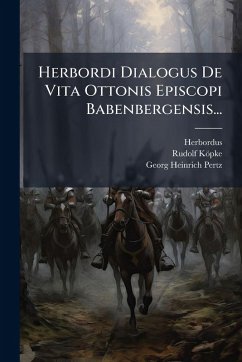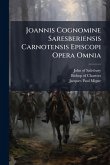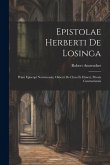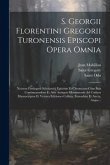Herbordi Dialogus De Vita Ottonis Episcopi Babenbergensis offers a detailed account of the life of Otto of Bamberg, a significant figure in 12th-century ecclesiastical history. Written in Latin by Herbordus, this dialog provides valuable insights into Otto's missionary work among the Pomeranians and his role in the Christianization of the region. This edition, meticulously prepared by Rudolf Köpke and Georg Heinrich Pertz, presents a critical examination of the original text, making it an essential resource for scholars of medieval history and religious studies. The text explores Otto's interactions with various political and religious figures, shedding light on the complex dynamics of the medieval world. As a primary source, the "Dialogus" offers invaluable perspectives on the cultural and religious landscape of the era, capturing the challenges and triumphs of spreading Christianity in Eastern Europe. This book remains a vital historical document for understanding the life and legacy of Otto of Bamberg. This work has been selected by scholars as being culturally important, and is part of the knowledge base of civilization as we know it. This work was reproduced from the original artifact, and remains as true to the original work as possible. Therefore, you will see the original copyright references, library stamps (as most of these works have been housed in our most important libraries around the world), and other notations in the work. This work is in the public domain in the United States of America, and possibly other nations. Within the United States, you may freely copy and distribute this work, as no entity (individual or corporate) has a copyright on the body of the work. As a reproduction of a historical artifact, this work may contain missing or blurred pages, poor pictures, errant marks, etc. Scholars believe, and we concur, that this work is important enough to be preserved, reproduced, and made generally available to the public. We appreciate your support of the preservation process, and thank you for being an important part of keeping this knowledge alive and relevant.
Bitte wählen Sie Ihr Anliegen aus.
Rechnungen
Retourenschein anfordern
Bestellstatus
Storno








